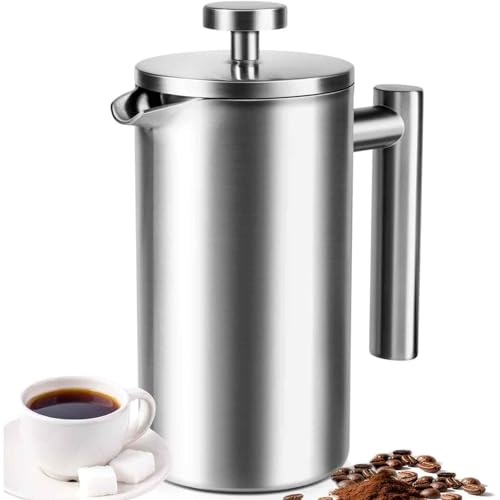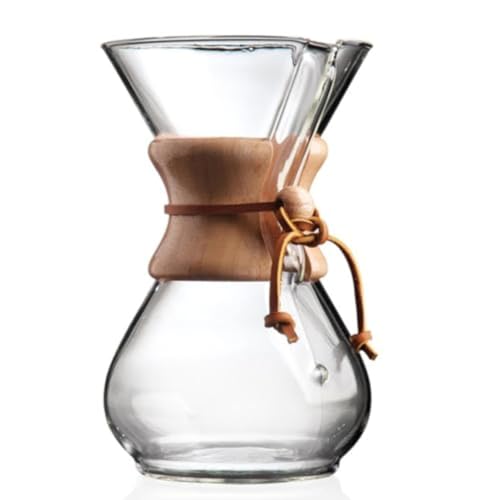Introduction to Coffee Brewing Methods
Coffee is one of the most widely consumed beverages globally, and the method of preparation can significantly impact its flavor and aroma. Among the various brewing techniques, French Press and Pour Over stand out as two of the most popular. Each process offers a unique approach, contributing distinct characteristics to the final cup. Understanding these techniques can help coffee enthusiasts make informed choices about their preferred brewing style.
The French Press, also known as a press pot or plunger pot, relies on a simple yet effective mechanism that involves steeping coarsely ground coffee in hot water. The coffee grounds are held at the bottom of the container, allowing for maximum extraction of flavors and oils. This method typically produces a full-bodied and rich coffee, characterized by its bold flavors and slightly gritty texture. The French Press is often preferred by those who enjoy a robust cup, as it showcases the complexity of coffee beans.
- Double-Walled French Press – Make perfectly brewed coffee at home like a barista. The double-walled coffee press is heat…
- Sleek Stainless Steel – The coffee maker is created using 304 grade stainless steel, with a smooth and durable finish an…
- 4-Layered Filtration System – The high quality filtration system of our steel French press traps the smallest coffee gro…
- Your Coffee Making Partner – Serve refreshing coffee or tea to your family, friends, guests or anyone. The user-friendly…
On the other hand, the Pour-Over method entails a manual brewing process where hot water is poured over coffee grounds in a filter. This technique controls the brewing time and temperature, leading to a cleaner and brighter flavor profile. The Pour-Over method usually highlights the subtle nuances of coffee, making it an appealing choice for those who appreciate a lighter, more delicate brew. Enthusiasts often favor this method for its ability to highlight the attributes of different coffee varieties.
- Premium Materials for Durability: Crafted from high-quality, food-grade stainless steel (gooseneck kettle & grinder) and…
- Precision Gooseneck Kettle with Thermometer: The built-in thermometer provides accurate temperature readings, while the …
- All-in-One Coffee Pour Over Set: Includes a 40oz gooseneck kettle, coffee grinder, 20oz glass dripper, and stainless ste…
Both brewing methods have their distinctive strengths and weaknesses in providing an array of flavors that cater to diverse preferences. By understanding the fundamentals of French Press and Pour-Over techniques, individuals can better determine which method aligns with their taste and brewing style, ultimately helping to identify the best coffee maker for their needs.
Budget Considerations: Cost of Equipment
When choosing between the French press and pour-over methods for brewing, budgetary factors play a crucial role. Both methods offer unique advantages in flavor extraction but differ significantly in initial investment and long-term costs. The French press, often regarded as one of the best coffee makers for home brewing, typically has a lower entry cost. A basic model can be purchased for as little as $15 to $30, making it an attractive option for budget-conscious consumers. However, while the initial cost is low, users may consider investing in a quality grinder to enhance their brewing experience.
On the other hand, pour-over coffee makers generally start in the same price range but can escalate quickly based on the brand and materials. High-end options, such as the Chemex or Hario V60, can cost anywhere from $25 to upwards of $100. For optimal brewing, pour-over methods often require additional accessories, such as a gooseneck kettle for precise pouring and a quality coffee scale to measure grounds accurately. These extras can significantly impact the overall investment; it’s important to account for them when analyzing budget implications.
For both methods, the long-term value is notable. Brewing at home not only provides the opportunity to experiment with bean varieties and brewing techniques but also leads to significant savings compared to regular purchases from coffee shops. With the average coffee shop drink costing anywhere from $4 to $5, using a French press or pour-over system can lead to substantial annual savings for avid coffee drinkers. Thus, when weighing the options of French press vs pour over, considering total costs—including initial equipment investment and long-term savings—is essential for making an informed decision regarding the best coffee maker for individual needs.
Quality of Brew: Flavor Profiles and Differences
The quality of coffee produced by varying brewing techniques can influence a person’s preference between methods, French press and pour-over. Each method offers distinct flavor profiles, resulting from different extraction processes, which can ultimately shape the coffee experience.
The French press employs a full immersion brewing method, allowing the coffee grounds to steep in hot water for several minutes. This prolonged contact time facilitates the extraction of oils, resulting in a robust body and a rich, bold flavor. Coffee brewed with a French press often boasts a heavy mouthfeel and an intensified aroma, providing a complex taste that many enthusiasts appreciate. However, the sediment produced during the brewing process can occasionally leave a gritty texture in the final cup, which might not appeal to everyone.
In contrast, the pour-over technique emphasizes precision and control. Water is poured over coffee grounds in a circular motion, allowing for a more consistent extraction. This method tends to highlight the delicate flavors within the coffee, showcasing the nuances of individual beans. The resulting brew typically has a lighter body and a cleaner palate, making it preferable for those who favor subtlety in their coffee. The absence of sediment leads to a more refined experience, allowing drinkers to savor the brightness and floral notes often present in specialty coffees.
Moreover, personal preferences play a significant role in determining which method yields a more satisfying cup. Some individuals may find the boldness of a French press aligns with their taste, while others might gravitate towards the clarity and complexity offered by pour-over. Thus, both brewing methods possess unique attributes that cater to different palates, ultimately contributing to the ongoing debate between French press vs pour-over. As individuals explore these methods, they may understand their own preferences and find their ideal cup of coffee.
Ease of Use: Convenience in Brewing
When evaluating the ease of use between the French Press and Pour Over coffee methods, several practical factors come into play, including preparation time, maintenance, and user experience. Each brewing technique caters to a different type of coffee enthusiast, from novices to seasoned aficionados, which impacts its convenience and suitability for daily routines.
The French Press is renowned for its simplicity. To brew coffee using this method, you need coarsely ground coffee, hot water, and a few minutes of patience. The process begins by adding ground coffee to the press, followed by boiled water. After allowing the mixture to steep for about four minutes, the user presses down the plunger to separate the grounds from the liquid. This straightforward approach makes the French Press option for those seeking a no-fuss brewing experience. However, this method does require cleaning the press after each use, as the coffee grounds need to be disposed of and the equipment washed—a minor inconvenience but one that may deter some users.
Conversely, the Pour Over method offers an experience that can be as simple or elaborate as the user desires. For beginners, the basics are easy to grasp: place the coffee filter in the dripper, add coffee grounds, and slowly pour hot water over the coffee while allowing it to drip into a carafe. However, achieving the perfect cup may demand practice with variables such as water temperature and pouring technique. This may intimidate some novices, but for coffee lovers, these variables can enhance the brewing experience. Additionally, maintenance can vary; the filters used in Pour Over brewing often need to be replaced, but the dripper itself may be easier to clean than a French Press.
In terms of preparation time, both methods are relatively quick, but the French Press typically offers a more straightforward process, making it ideal for those who prioritize convenience. Ultimately, the choice between the French Press and Pour-Over brewing methods often comes down to personal preference and lifestyle, as each of them presents unique advantages and experiences for coffee lovers.








